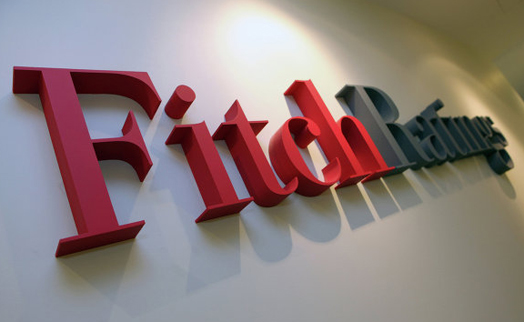YEREVAN, March 5, /ARKA/ Fitch Ratings said it has assigned the Armenian City of Yerevan Long-Term Foreign- and Local-Currency Issuer Default Ratings (IDRs) of ‘B+’ with Stable Outlook.
It said the ratings reflect Yerevan’s Standalone Credit Profile (SCP) of ‘bb-‘, resulting from a combination of a ‘Vulnerable’ risk profile and a ‘aaa’ debt sustainability assessment. The IDRs are capped by the Armenian sovereign ratings of ‘B+’/Stable.
Yerevan is the capital of Armenia and its largest economic and metropolitan area. As of 2020, the city’s population was 1.1 million. The economy is dominated by the service sector and its wealth metrics are modest compared with international peers. The city’s accounts are cash-based, and the budget framework covers a single year.
This reflects a ‘Weaker’ assessment for five key risk factors – revenue robustness; revenue adjustability; expenditure adjustability; and liabilities and liquidity robustness and flexibility – and a ‘Midrange’ assessment for one key risk factor (expenditure sustainability).
The ‘Vulnerable’ assessment of Yerevan’s risk profile also reflects the high risk of a weakening of the city’s ability to cover its debt service needs over the scenario horizon (2021-2025), either because of revenue falling short of expectations or expenditure overshooting expectations, or an unanticipated rise in liabilities or debt service requirements.
Yerevan’s operating revenue is mostly composed of transfers from the central budget, which averaged 70% in 2016-2020. A small part of the transfers is general purpose grants aimed at enhancing the city’s fiscal capacity, but the majority of transfers is earmarked for particular spending or delegated mandates. Taxes averaged 16% of operating revenue in 2016-2020 and the tax base comprises various property taxes. These taxes are economically stable, but they have limited scope for growth, particularly in the context of low per capita income, which lags international peers.
Fitch assesses Yerevan’s revenue robustness as ‘Weaker’ as most revenue comes from a ‘B+’ rated sovereign counterparty. Prospects for growth are limited by weak economic environment and disruptions caused by the coronavirus pandemic. Fitch estimates Armenia’s GDP will shrink 6.2% in 2020 before recovering 3.2% in 2021.
The city’s fiscal flexibility is limited by institutional arrangements, according to which fiscal authority is concentrated at the central government level. The later has monopolistic power in setting tax rates or introducing new taxes. In addition to collecting property taxes Yerevan also collects various fees and charges, part of which could be adjusted by the city. The proportion of charges and fees accounted for 12% of total revenue in 2020, and some of them have already been set at a maximum level. This means that a potential revenue increase would cover less than 50% of a reasonably expected decline of revenue, indicating the city’s limited flexibility to respond to negative economic developments.
Yerevan has prudent control over expenditure, resulting in a track record of the expenditure dynamic closely correlated with revenue. The city’s responsibilities remain relatively stable through the economic cycle. The largest spending item is education, which accounted for 42% of total spending in 2019. It was followed by the utility sector, which accounted for another 22% of expenditure. Most spending is financed through transfers from the central budget, which makes the city’s budgetary policy dependent on the decisions of the central government.
Expenditure Adjustability: ‘Weaker’
Fitch assesses Yerevan’s expenditure adjustability as low. Most spending responsibilities are mandatory, with inflexible items dominating expenditure. Therefore, the bulk of expenditure could be difficult to cut in response to potential revenue shrinking. The proportion of capital expenditure is low, averaging 9% of total expenditure in 2016-2020, which does not provide for additional spending flexibility. High infrastructure needs mean the city would be unable to further cut its capex.
Liabilities & Liquidity Robustness: ‘Weaker’
The development of the capital market in Armenia is at the initial stage and the city has no real practice in debt management as it retained its debt-free status as of the beginning of 2021. The national legal framework sets strict limitations on the debt policy and does not allow new debt to be incurred until existing debt obligations are fully repaid. It allows FX debt to be incurred. The city’s ability to manage debt could be tested soon if it draws down funding from international financial institution. Contingent risk is limited by moderate debt at the city’s municipal companies as the city does not provide any guarantees.
Liabilities & Liquidity Flexibility: ‘Weaker’
The city’s largest source of liquidity is its accumulated cash reserves. The total amount of liquidity is unrestricted, and the city can use it to fund operating expenditure and the residual part could be used to fund capex. Yerevan holds its cash in treasury accounts, as deposits with commercial banks are prohibited under the national legal framework. For extra liquidity the city could borrow from the national treasury. As only limited forms of liquidity are available and potential counterparty risk is caped at ‘B+’ we assess this factor at ‘Weaker’.
Debt Sustainability: ‘aaa category’
In its rating-case scenario Fitch assumes that the currently debt-free city will start borrowing in 2021. However, the level of indebtedness will remain moderate and will not lead to a serious deterioration in debt sustainability metrics in 2021-2025. Fitch expects the city’s debt payback ratio – the primary metric of debt sustainability assessment for Type B local and regional governments (LRG) – will remain strong at under 5x, which corresponds to a ‘aaa’ assessment. The prudent secondary metrics also support the assessment.
The actual debt service coverage ratio (operating balance-to-debt service, including short-term debt maturities) will stay above 4x during all the years of the rating case. The fiscal debt burden, which will be gradually increase during 2021-2025 from its current zero level, will remain moderate at below 50% over the rating horizon. A strong assessment of all three metrics results in ‘aaa’ debt sustainability for the city. -0-








